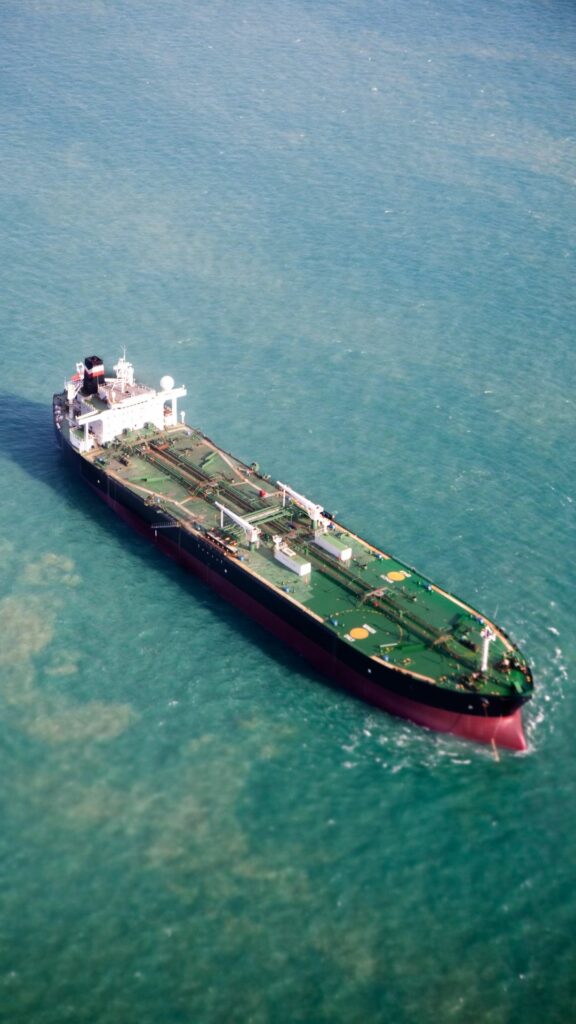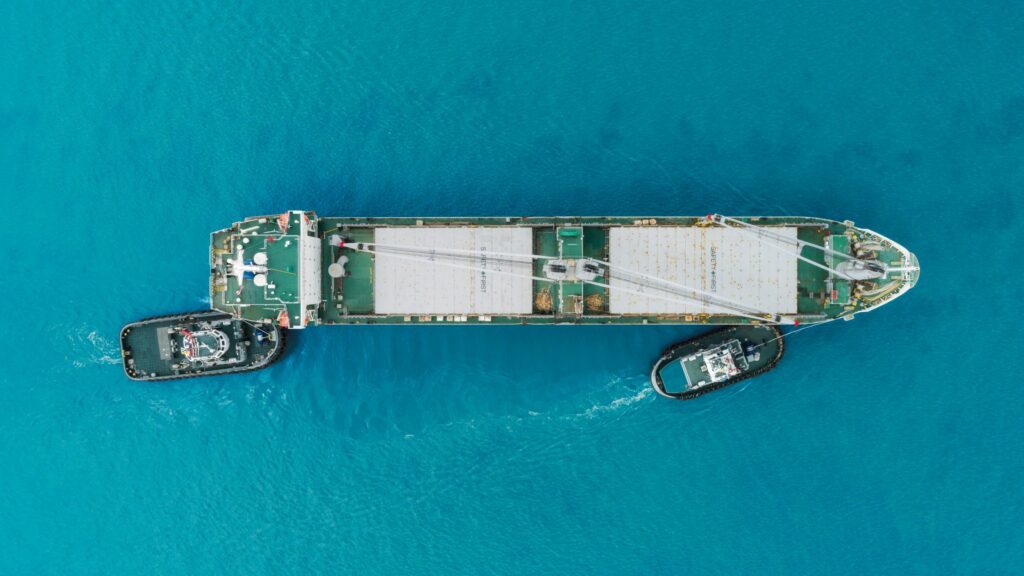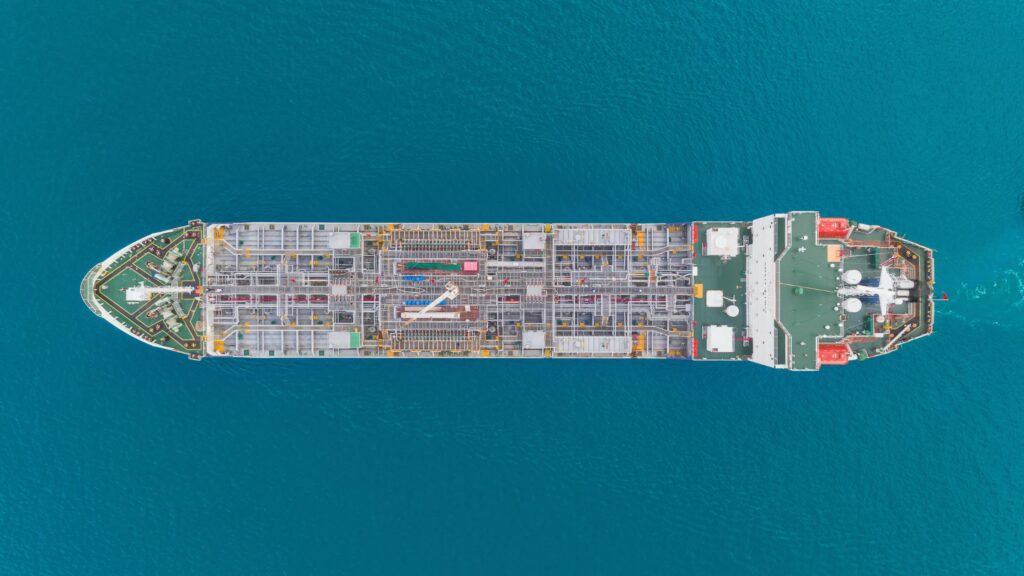Physical Address
304 North Cardinal St.
Dorchester Center, MA 02124
Time Charter, often overshadowed by the more commonly discussed Spot Chartering in the maritime industry, secures its position with unparalleled flexibility and strategic advantages for both shipowners and charterers. This arrangement distinguishes itself within the realm of shipping contracts, offering a tailored experience that sets Time Charter apart as a significant option in its own right. Key components of Time Charter agreements include the duration of the charter, hire rate, and conditions for delivery and redelivery of the vessel, each known for their specific implications on the agreement’s overall functionality.
Single Trip Time Charters and Period Time Charters also stand out, providing options that range from short-term commitments to longer engagements for those involved. Each element of a Time Charter agreement presents its own set of considerations, operational freedoms, financial commitments, and strategic benefits. The following sections will dissect these components in detail, offering a comprehensive understanding of why Time Charter remains a preferred choice for navigating the complexities of global shipping logistics, ensuring a seamless connection between the commercial goals of shipowners and the logistical needs of charterers worldwide.

Time Charter is a contractual framework within the shipping industry where a charterer leases a vessel from a shipowner for a predetermined period. This contrasts with Spot Chartering, which is designed for single voyages on a transactional basis. Time Charter extends beyond mere transactional engagements, offering the charterer extensive control over the vessel’s operation.
This includes determining the routes and managing the cargo, thus providing a unique blend of flexibility and cost-effectiveness. The essence of Time Charter lies in its ability to foster a strategic partnership between the shipowner and charterer. The agreement meticulously outlines the duration of the charter, hire rate, and delivery and redelivery conditions of the vessel.
These components ensure transparency and a shared understanding, pivotal for the seamless execution of maritime logistics operations. Under Time Charter, shipowners are assured of a steady income stream, while charterers are empowered with operational control and the agility to seize market opportunities. This symbiosis encapsulates a model of cooperation that elevates efficiency and drives profitability in the complex arena of maritime commerce.
Parties gravitate towards Time Charter for its flexibility in vessel operation, enabling precise route planning and cargo management tailored to specific business requirements. This strategic choice is underscored by its cost-effectiveness over the long haul, presenting a financially sound alternative to spot chartering, particularly for entities aiming to streamline their shipping operations amidst fluctuating market conditions. Furthermore, Time Charter empowers charterers with control over the voyage and cargo, facilitating optimized logistics and the agility to adapt swiftly to market shifts.
This blend of operational freedom, financial stability, and logistical efficiency positions Time Charter as a compelling option for those in pursuit of a competitive edge in the dynamic realm of global shipping.
The flexibility that Time Charter offers enables charterers to customize vessel operations extensively. This adaptability is crucial for specific route planning, allowing for the optimization of travel paths and schedules to meet precise cargo needs and market demands. The ability to tailor routes enhances operational efficiency and can significantly reduce voyage times and costs.
Over the long term, Time Charter proves to be markedly cost-effective in comparison to the often unpredictable rates associated with spot chartering. This financial advantage provides businesses with a stable framework for operational costs, enabling more accurate budget planning and a reduced risk of market price volatility impacting shipping expenses.
Control over the voyage and cargo is a pivotal benefit of the Time Charter, offering charterers the capacity to directly manage every aspect of their logistics. This level of oversight ensures that cargo handling, scheduling, and routing are meticulously aligned with the charterer’s strategic goals, culminating in optimized logistics and superior operational efficiency.
A Time Charter agreement is anchored by several pivotal elements that define the scope and expectations of the charter, fostering a clear and mutually beneficial relationship between the shipowner and charterer. The duration of the charter stands out as a crucial component, delineating the lease term of the vessel, which can span from short-term engagements to multi-year agreements, tailored to the charterer’s operational requirements. The hire rate represents another fundamental aspect, setting the daily or monthly cost for chartering the vessel.
This rate is influenced by prevailing market conditions and the vessel’s specific attributes, reflecting the economic dynamics of the shipping industry. Lastly, delivery and redelivery conditions specify the logistics of how and where the vessel will be transferred back and forth between the owner and the charterer, including stipulations on the vessel’s condition. These components collectively form the structural framework of a Time Charter agreement, enabling both parties to navigate their partnership with clarity and efficiency.
The duration of the charter plays a pivotal role in defining the lease term for the vessel, offering tailored flexibility to accommodate the charterer’s precise operational needs. This duration can range from short-term agreements to extended multi-year leases, significantly influencing the charterer’s strategic and logistical planning.
Central to the financial structure of the Time Charter agreement, the hire rate establishes the daily or monthly cost associated with chartering the vessel. Influenced by the prevailing market conditions and specific attributes of the vessel, such as its size, age, and technological capabilities, the hire rate encapsulates the economic terms agreed upon by the shipowner and charterer.
Delivery and redelivery conditions form a crucial part of the agreement, specifying the logistical and quality standards for the vessel’s transfer between the shipowner and charterer. These conditions detail the exact locations for delivery and redelivery, alongside requirements regarding the vessel’s condition at those times, ensuring that both parties uphold high operational and maintenance standards throughout the charter term.

Under a Time Charter agreement, responsibilities are clearly divided between the charterer and the shipowner, each playing a crucial role in the vessel’s operational lifecycle. The charterer’s responsibilities include managing fuel costs and port charges, which cover expenses like bunkering, port fees, and the costs associated with loading and unloading cargo. This allocation allows charterers to directly control the expenses linked to their specific utilization of the vessel, aligning with their logistical and operational strategies.
The owner’s responsibilities are centered on vessel maintenance and crew wages, ensuring that the ship remains in a seaworthy condition and is fully operational for the duration of the charter. This responsibility includes regular upkeep, repairs, and compliance with maritime safety standards, safeguarding the vessel’s performance and reliability. This structured division of responsibilities under Time Charter is essential, as it establishes a transparent framework that delineates each party’s contributions to the chartering process.
This clarity enhances operational efficiency, fosters mutual accountability, and ensures the vessel’s ongoing maintenance and operational readiness.
Charterer’s responsibilities within a Time Charter agreement are specifically tailored to encompass fuel costs and port charges. This includes a comprehensive range of expenses such as bunkering fees and the costs associated with docking at ports, alongside charges for the loading and unloading of cargo. This clear delineation of responsibilities allows charterers to have direct control over the operational expenses tied to their specific utilization of the vessel, facilitating detailed budgeting and effective cost management in line with their logistical operations.
The owner’s responsibilities in the context of a Time Charter are focused on vessel maintenance and the provision of crew wages. This responsibility extends to all necessary actions to keep the vessel in a seaworthy and operational state, including regular maintenance, necessary repairs, and adherence to maritime safety regulations. Additionally, ensuring the crew is adequately compensated and taken care of falls under the shipowner’s purview, highlighting the owner’s role in maintaining the vessel’s operational readiness and safety for the duration of the charter.
Within the framework of Time Charter agreements, several types of disputes are commonly encountered, each stemming from different facets of the chartering relationship. Off-hire disputes are prevalent, focusing on disagreements regarding the vessel’s availability and operational status. These disputes question whether specific circumstances justify placing the vessel off-hire, impacting the financial aspects of the charter.
Condition of vessel disputes also arise, centering on the maintenance and seaworthiness of the ship. Here, the bone of contention often lies in the vessel’s condition at the time of delivery and throughout the charter period, with differing views between the shipowner and charterer on whether the vessel meets the agreed-upon standards. Lastly, payment of hire disputes are common, involving the timing and amount of charter payments.
Discrepancies in payment amounts or delays can lead to conflicts, necessitating clear communication and, sometimes, legal intervention to resolve. Navigating these disputes requires a thorough understanding of the Time Charter agreement and a strategic approach to dispute resolution, often involving arbitration, mediation, or litigation to achieve a satisfactory outcome for both parties.
Off-hire disputes arise from disagreements over the vessel’s availability for service and its operational status, questioning if specific incidents or conditions justify placing the vessel off-hire, thus pausing the charter payments. These disputes critically depend on the interpretation of off-hire clauses within the charter agreement, necessitating a comprehensive review of events and conditions that led to the vessel’s deemed unavailability.
Disputes over the condition of the vessel concentrate on the maintenance level and seaworthiness of the ship at delivery and throughout the charter term. These conflicts often stem from differing perspectives on whether the vessel adheres to the agreed-upon maintenance and operational readiness standards, emphasizing the need for explicit, detailed conditions in the charter agreement regarding the vessel’s upkeep and performance criteria.
Payment of hire disputes revolve around the timing and the specified amounts of payments as outlined in the charter agreement. Issues such as payment delays or discrepancies in the agreed amount can lead to financial conflicts between the shipowner and the charterer. These disputes highlight the critical importance of having clear, unambiguous payment terms within the charter agreement to ensure a mutual understanding of payment obligations and schedules.

Resolving disputes within Time Charter agreements requires a strategic approach, leveraging mechanisms such as arbitration, mediation, and litigation to reach a resolution. Arbitration stands out as a favored method among maritime professionals, providing a binding resolution through the expertise of maritime arbitration bodies. This process is particularly appreciated for its ability to maintain confidentiality and for the maritime-specific knowledge of its arbitrators.
Mediation offers an alternative path, presenting a less formal environment where a neutral third party aids in facilitating a settlement between the conflicting parties. This method is valued for its focus on collaboration and the potential for innovative, mutually satisfactory solutions. In instances where arbitration and mediation do not lead to a resolution, litigation in national courts may become necessary.
This route delivers a legally enforceable judgment, though it may involve a more extensive timeline and lack the privacy of arbitration. Each of these dispute resolution avenues plays a crucial role in the effective management of Time Charter disputes, ensuring that disagreements are addressed in a manner that is both efficient and conducive to the interests of all parties involved.
Arbitration emerges as a crucial avenue for resolving disputes within the framework of Time Charter agreements, engaging the specialized knowledge of maritime arbitration bodies. This method is highly regarded for its ability to provide a binding resolution, with arbitrators who bring a deep understanding of maritime law and industry-specific nuances, ensuring fair and informed decisions.
Mediation represents a valuable alternative for dispute resolution, involving neutral third parties who guide the disputing parties toward an amicable settlement. This process is celebrated for its emphasis on collaboration and flexibility, fostering an environment where creative, mutually agreeable solutions can be crafted, potentially preserving and even strengthening business relationships.
In situations where arbitration and mediation do not yield a resolution, litigation in national courts becomes the path to securing a legal judgment. This formal route guarantees a resolution that is enforceable by law, though it is typically more time-intensive and public than alternative methods. Litigation stands as a definitive means to resolve disputes, ensuring that the parties involved receive a clear, legally binding decision.
For charterers, engaging in a Time Charter agreement brings forth significant advantages, prominently the opportunity to capitalize on market opportunities without the hefty capital investment associated with vessel ownership. This approach markedly reduces capital expenditure on fleet expansion, enabling a more strategic allocation of financial resources. Additionally, Time Charter affords charterers operational control over voyages and cargo management, offering the flexibility to tailor shipping logistics and navigational routes to meet specific business objectives and adapt to changing market dynamics.
This level of control, coupled with the financial efficiencies gained, empowers charterers to bolster their competitive position in the global shipping arena, making Time Charter a highly beneficial option for those aiming to optimize operational effectiveness and responsiveness in the marketplace.
The ability to capitalize on market opportunities without the need for vessel ownership is a pivotal benefit for charterers. This facet of Time Charter empowers businesses to swiftly adapt to and leverage market dynamics, offering the agility to scale operations up or down based on immediate needs and opportunities, without the limitations imposed by the ownership of physical assets.
Reduced capital expenditure on fleet expansion underscores a significant financial advantage of Time Charter agreements. By circumventing the hefty upfront costs associated with vessel acquisition, charterers can allocate their capital more effectively across other areas of their business, enhancing overall financial flexibility and strategic investment capabilities.
Gaining operational control without the long-term commitment and financial implications of vessel ownership allows charterers to optimize their shipping operations with unparalleled flexibility. This aspect of Time Charter ensures that charterers can tailor voyage planning and cargo management to their specific requirements and market conditions, achieving efficient logistics and route optimization without the encumbrances of owning and maintaining a fleet.
For shipowners, entering into Time Charter agreements brings a host of advantages that bolster financial stability and enhance operational management. A key benefit is the provision of a steady income stream over the charter period, which offers a predictable revenue source, facilitating more effective financial planning and stability in the often volatile shipping market. Moreover, Time Charter significantly reduces commercial and operational risks for shipowners.
By transferring the responsibility for the vessel’s employment to the charterer, owners are shielded from the direct impacts of market fluctuations, allowing for a more stable operational environment. Another critical advantage is the ability to optimize fleet utilization and planning. This aspect ensures that vessels are continually employed and generating income, maximizing the efficiency and profitability of the fleet.
This strategic benefit allows shipowners to concentrate on maintaining high operational standards and vessel efficiency, secure in the knowledge that their assets are fully leveraged through the Time Charter arrangement.
A steady income stream during the charter period stands as a pivotal advantage for shipowners in Time Charter agreements. This reliable source of revenue supports more accurate financial forecasting and stability, offering shipowners a buffer against the inherent unpredictability of the shipping market.
Engaging in Time Charter agreements reduces commercial and operational risk exposure for shipowners. By allocating the responsibility of the vessel’s employment to the charterer, shipowners are shielded from the immediate impacts of market downturns, ensuring a more stable and predictable operational environment.
A Time Charter allows the charterer to lease a vessel for a specific period, providing crew and management while the charterer controls the cargo and trading routes. It’s ideal for those needing flexibility in operations without the burden of vessel management. In contrast, a Bareboat Charter involves leasing the vessel without crew or management, transferring full control and responsibility to the charterer. This option suits those who want complete operational control and are equipped to handle the vessel’s management and crewing needs.
Time Charter provides shipowners with a significant opportunity to optimize fleet utilization and planning. This strategic advantage ensures that vessels are consistently active and revenue-generating, facilitating the efficient management of assets and enhancing the fleet’s overall profitability. This level of optimization is crucial for sustaining a competitive position in the dynamic shipping industry.
What is a Time Charter in maritime transport?
A Time Charter refers to a contract where a vessel owner provides a ship to a charterer for a specific period. The charterer has control over the vessel’s commercial operations, while the owner remains responsible for its navigation and maintenance.
How are rates determined in Time Charter agreements?
Rates in Time Charter agreements are typically determined based on market conditions, the size and type of the vessel, and the duration of the charter. Negotiations between the vessel owner and the charterer also play a crucial role.
What are the main responsibilities of a charterer in a Time Charter?
In a Time Charter, the charterer’s main responsibilities include paying the charter hire, providing cargo, and directing the vessel’s commercial operations. The charterer must also cover expenses related to cargo handling and port charges.
What distinguishes a Time Charter from a Voyage Charter?
The key difference lies in the duration and control. In a Time Charter, the charterer hires the vessel for a set period and decides the cargoes and destinations. In a Voyage Charter, the owner transports a specific cargo on a designated route.